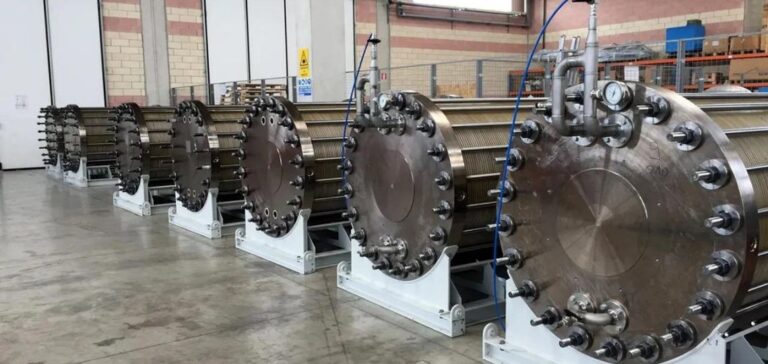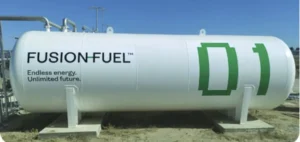SoCalGas and EVOLOH Inc, a developer of anion exchange membrane (AEM) electrolyzer technologies, recently completed a research project aimed at optimizing hydrogen production. This project, resulting in a reduction in capital costs of around 25%, marks a significant advance in electrolyzer manufacturing.
Technological Improvements
The research project has optimized the manufacture of electrolyzers using available materials and a roll-to-roll production process, thus reducing supply chain constraints. Not only has this method enabled faster, cheaper production, it has also contributed to a 15% increase in the hydrogen production efficiency of EVOLOH’s NautilusTM electrolyzers. This increase in efficiency also means longer equipment life than with traditional techniques, which is crucial for large-scale industrial applications.
Electrolyzers are essential components in hydrogen production, as they separate water into hydrogen and oxygen. EVOLOH’s improvements to its AEM electrolyzers are particularly significant, as they reduce production costs while increasing efficiency, making hydrogen more competitive on the energy market.
SoCalGas’ role
SoCalGas, through its Research, Development and Demonstration (RD&D) program, played a key role in this project, providing funding as well as crucial technical assistance for the development of high-speed coating methods for AEM electrolyzers. EVOLOH’s electrolyzer stacks are compact, modular and scalable up to 24 megawatts, making them ideal for large-scale industrial applications. This scale-up capability is essential to meet the growing demand for hydrogen production in various industrial sectors.
Jawaad Malik, Director of Strategy and Sustainability at SoCalGas, emphasized the importance of these advances, saying that innovative projects like this one significantly reduce the costs and lead times of electrolyser systems, making renewable hydrogen production more competitive with traditional energy sources.
Industrial Deployment
EVOLOH plans to deploy this technology on a larger scale at its new Center of Excellence in Lowell, Massachusetts, with a production target of 3.75 GW per year by 2025 and up to 15 GW in 2027. In parallel, megawatt-scale tests will be launched at EVOLOH’s headquarters in Santa Clara, California, later this year. These tests are essential to validate technological improvements and ensure that electrolyzers can be produced on a large scale while maintaining efficiency gains and cost reductions.
The prospects for industrial deployment of this technology are promising, as it meets a growing need for more economical and efficient hydrogen production solutions. The advances made by EVOLOH and SoCalGas could transform the hydrogen market by offering viable solutions for large-scale production.
The collaboration between SoCalGas and EVOLOH represents a major step forward in hydrogen production. By optimizing electrolyzer manufacturing processes and reducing production costs, these companies are paving the way for wider adoption of hydrogen as a competitive energy source. This initiative illustrates the importance of technological innovation in the energy sector, and the opportunities it offers for improving the efficiency and profitability of energy solutions.






















